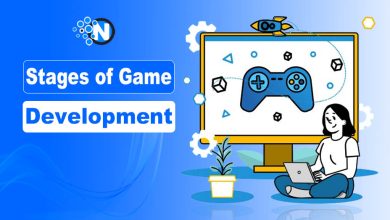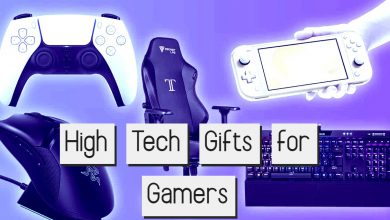Gamification 3.0: How Interactive Design and Micro-Moments Are Powering Digital Engagement?

Gamification has evolved significantly since its early days, marked by badges and leaderboards. In 2025, we’ve entered the era of Gamification 3.0, an advanced blend of behavioral psychology, interactive design, and real-time responsiveness to increase digital engagement. This new wave isn’t just about making apps fun; it’s about creating more engaging digital experiences that respond to users’ needs in the moment.
In this blog post, I will explain how gamification 3.0 is using interactive design and micro-moments to power digital engagement.
What is Gamification 3.0?
Gamification is the use of game-like elements in non-game contexts to enhance user engagement.
It was first used in 1908 when the Boy Scouts were awarded a badge in recognition of their achievements. Now, over a century later, it has become part of the standard design of most software programmes.
The first time the term was used was in 2002 by Nick Pelling, a game developer who had been creating games since the 1970s. His idea was to coin a term that would refer to making difficult things more easy.

The introduction of Gamification 3.0 has revolutionised and created an entirely new user experience. It has transformed the gaming experience into something much more than just simple badges, leaderboards, and other game mechanics. It has now become a highly evolved system designed to create extremely personalised experiences. They take into consideration the specific circumstances, emotions, and focus on the intrinsic motivations of a player, rather than being solely based on offering a reward system.
Tech Companies Are Using Gamification for More Than Just Games
The gamification market is on the rise and is expected to reach around $124 million by 2030. Gamification is used by many tech companies across different sectors. The implementation of a system that uses real-time interactive formats and taps into the reward psychology creates experiences that are unpredictable, creating anticipation and excitement. It is an effective way to increase employee productivity, enhance the user experience, and create emotional engagement and customer loyalty.
Fintech
Fintech (financial technology) has revolutionised how individuals handle, invest, and interact with their money. They offer a range of different innovative technologies that have improved and streamlined financial services. The technology includes blockchain systems, online banking and lending, digital payments, cryptocurrency, investment platforms, and many more.
These companies understand that dealing with finances is tedious. Thats why they integrate gamification elements into their applications, encouraging customers to use healthier financial practices that include saving and investing money. For instance, some companies encourage customers to play & enjoy crazy time game for quick rewards or points.
Customers’ activity is rewarded if they meet certain challenges, such as investing or saving money or completing challenges that address financial literacy. Gamification has been very effective as it improves how customers manage their money, their understanding of financial services, and increases their level of engagement.
Edtech
Edtech platforms have incorporated gamification to create experiences that have transformed the educational journey of students. Appealing to ingrained human need to compete, students feel encouraged to push their learning experience to the next stage so that they can be recognised on leaderboards and be rewarded each time that they complete simulations, scenario based challenges, or interactive tests.
As a result students are more engaged, there is a higher retention rate of the information and increased skill development. These elements naturally encourage students to compete against others successfully.
Healthcare
Healthcare has always been a challenging sector as many individuals find it difficult to adhere to a healthy lifestyle and follow medical advice. Gamification in wellness and health apps boosts user engagement.
Users earn points for logging daily activity, taking medication on time, or completing fitness challenges.
These rewards motivate people to stick to healthy routines. They also make the experience more enjoyable. Many apps include social features, letting users share progress with others.
This adds a sense of community and support.
SaaS
SaaS (software as a Service) is a cloud based service that delivers software over the internet through subscription based services such as Microsoft. Users access services without having to download any programmes to their devices.
These companies use gamification to motivate their customers by providing them with a sense of progress, reward and recognition for achievements. It may include earning badges, acquiring points, or climbing to the top of a leaderboard, which releases the feel-good chemical dopamine in the brain and gives the product a positive connotation.
Showing progress and new achievements sparks healthy competition. Advancing through levels and hitting milestones builds excitement for users.
Competing with teammates and friends adds a social edge. This motivates users to push their limits. It also keeps them coming back for more thrilling experiences.
The Transformation of Entertainment Platforms
The user experience on entertainment platforms rapidly evolved in the past decade. Traditional television programmes, such as game shows, have been replaced by digital-first mechanics through hybrid game-show-style designs. They offer a familiar environment that has been transformed from a passive activity into a universe that offers live elements delivered through live streaming.
Communities
Communities are created with an emphasis on urgency. Events are delivered in real time and incorporate an exciting element of unpredictability and authenticity. These elements enable individuals to actively participate through live chats, voting, and being rewarded for their progression in a game or other online activity.
Interactive Elements
Colorful interfaces, motion graphics, and live overlays make apps more dynamic. Leaderboards and reactions show real-time progress and social interaction. AR and VR add immersive layers to the experience.
These elements encourage users to participate, interact, and compete. As a result, engagement levels rise significantly
Micro-interactions
Micro-interactions help to drive digital retention as audiences can engage in low key interactions that require minimal effort. These interactions encourage audiences to repeat the experience and gamification helps viewers evolve from being passive to becoming actively involved.
There has been a rise of “game show mechanics” in digital interfaces across India and global markets. Features such as spinning wheels, lucky draws, bonuses for daily visits, or other types of promotional offers create user engagement. In India where most individuals access online content from smartphones, these game show mechanics function well and offer users economic incentives. In this way, users can earn real money, prizes, or gift cards that are very appealing to consumers who live on a budget.
Personalized Experiences
Creating experiences that resonate with local cultures through traditional games such as Andar Bahar naturally encourages users to immerse themselves into the digital universe. India is a very communal and social culture. Creating digital platforms that offer traditional entertainment options attracts users who enjoy sharing achievements, competing with friends, and teaming up for group challenges.
On a global scale, game mechanics play an important role in education platforms, e-commerce, fitness and wellness apps, social media and many other areas.
Conclusion
Gamification 3.0 is more than a trend, it’s a paradigm shift. By combining interactive design with micro-moment responsiveness, brands can create digital experiences that are not only functional but unforgettable. The future of engagement lies in meeting users where they are, with experiences that feel alive, adaptive, and fun.




